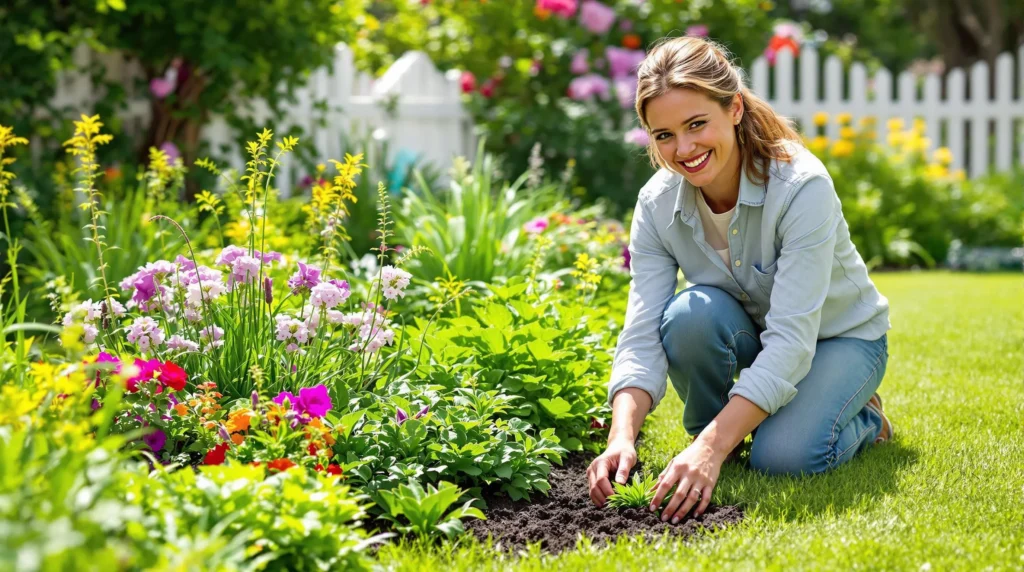10 Low-Maintenance Ground Covers for a No-Mow Lawn
- Creeping Thyme is an excellent ground cover that forms a dense, low-growing carpet reaching just 2-3 inches in height. This aromatic herb releases a pleasant fragrance when walked upon and produces tiny pink, purple, or white flowers that attract pollinators. Creeping thyme thrives in full sun, withstands light foot traffic, and requires minimal water once established.
- Clover offers exceptional lawn replacement benefits with its nitrogen-fixing properties that naturally fertilize your soil. White clover grows to about 4 inches tall, stays green during drought conditions, and produces dainty white flowers that bees love. It’s remarkably resilient, adapts to various soil types, and can be easily established from seed.
- Corsican Mint creates an ultra-low carpet at just 1 inch tall with tiny round leaves that release an intense minty scent when crushed. This delicate ground cover produces miniature lavender flowers in summer and prefers partial shade with consistently moist soil. Use it for garden paths, between stepping stones, or in sheltered areas of your yard.
- Sedum (stonecrop) varieties offer drought-tolerant, succulent foliage in multiple colors and textures. Low-growing types like Sedum acre form tight mats just 3 inches tall with bright yellow flowers in summer. These tough plants thrive in poor soil, full sun, and require almost no maintenance once established.
- Moss provides a lush, velvety carpet ideal for shaded areas where grass struggles. Different varieties offer various textures and shades of green, creating a woodland-like atmosphere in your yard. Moss requires no mowing, minimal care, and stays naturally low at 1-2 inches tall.
- Creeping Jenny (Lysimachia nummularia) features bright chartreuse foliage that brightens shady spots with its trailing stems reaching just 2 inches tall. This fast-growing ground cover produces cheerful yellow flowers in summer and spreads quickly to fill bare areas. It performs best in moist, partially shaded locations.
- Dwarf Mondo Grass forms tidy, grass-like clumps that reach 6-8 inches tall without requiring mowing. This evergreen ground cover creates a uniform appearance with its arching, dark green blades and thrives in both sun and partial shade. Plant it 6-8 inches apart for a solid carpet effect within two growing seasons.
- Mazus delivers a low-profile mat of small, green leaves topped with purple-blue flowers in spring. Growing just 2 inches tall, this ground cover spreads by runners to create a dense carpet that suppresses weeds effectively. Mazus handles light foot traffic and performs well in full sun to partial shade with moderate moisture.
- Creeping Juniper varieties offer evergreen, drought-resistant ground covers reaching 6-18 inches tall with spreads of 6-8 feet. Their blue-green to silver foliage maintains color year-round and creates excellent erosion control on slopes. These rugged plants thrive in full sun and poor soil conditions with minimal care.
- Roman Chamomile forms a fragrant, apple-scented mat of feathery foliage growing 3-6 inches tall. This perennial ground cover produces small, daisy-like white flowers throughout summer and can withstand occasional foot traffic. Plant it in full sun to light shade in well-draining soil for best results.
Why Traditional Lawns Are Becoming a Thing of the Past
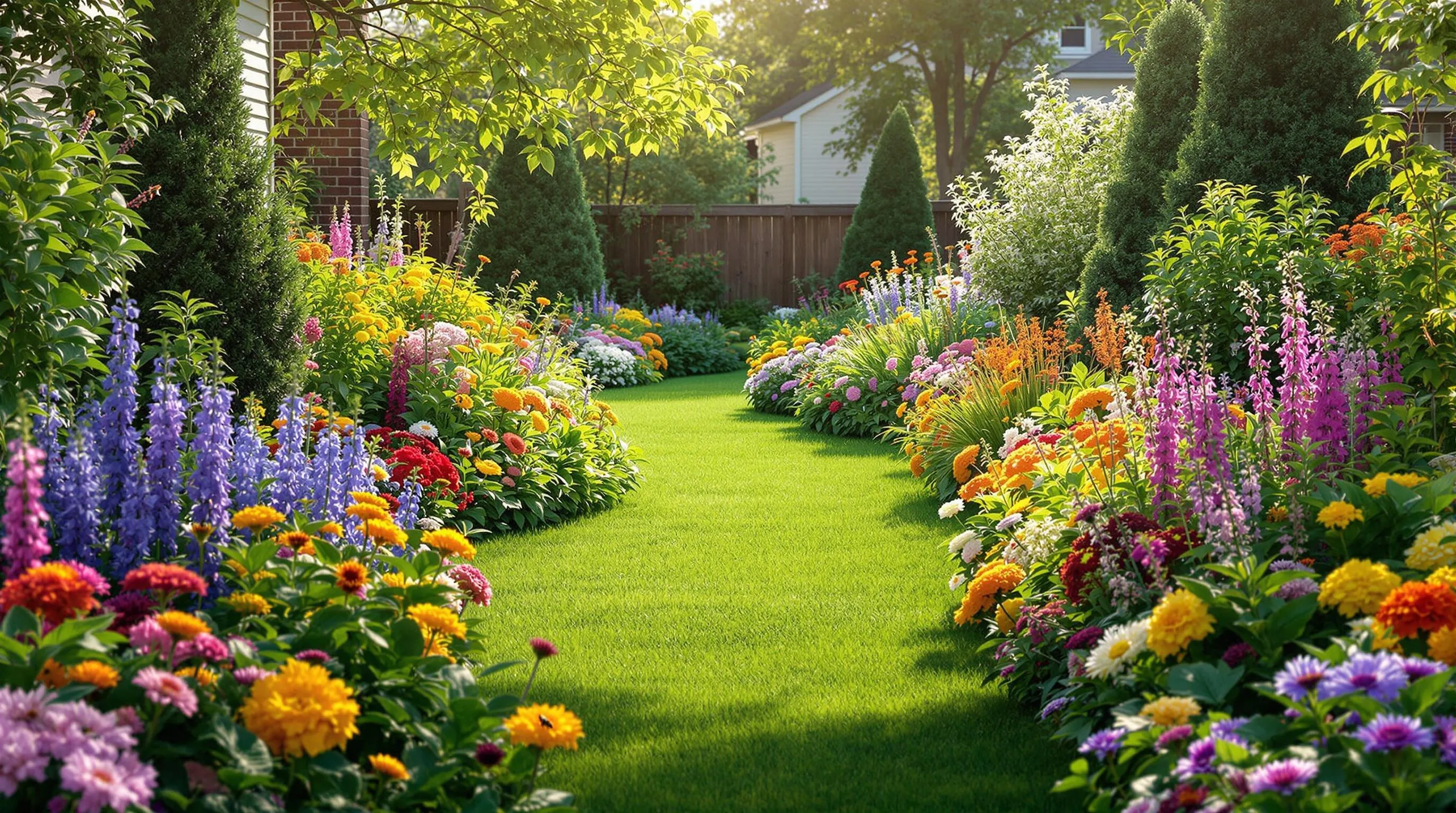
Traditional grass lawns are rapidly losing popularity as homeowners seek more sustainable, practical alternatives for their outdoor spaces. The perfect green carpet that once defined the American dream is now being recognized for its important drawbacks.
Environmental Impact of Traditional Lawns
Traditional lawns are environmental burdens that consume enormous resources while offering minimal ecological benefits. The average lawn drinks up to 30% of residential water use in the United States, with some regions seeing that number climb even higher during summer months. Chemical fertilizers and pesticides applied to maintain that pristine green appearance contaminate local water supplies, with an estimated 67 million pounds of synthetic pesticides used on U.S. lawns annually. Gas-powered lawn equipment generates alarming pollution levels—running a gas mower for one hour produces emissions equivalent to driving a car 100 miles. Also, conventional grass lawns create biological deserts that provide little habitat or food for pollinators and wildlife, contributing to declining biodiversity in suburban and urban areas.
Time and Cost Savings of No-Mow Alternatives
Switching to ground cover alternatives delivers substantial financial and time savings compared to traditional lawns. The average homeowner spends 70 hours annually on lawn maintenance—that’s nearly three full days of your life each year devoted to mowing, edging, and fertilizing. The financial burden is equally important, with Americans spending approximately $30 billion yearly on lawn care. Water bills for irrigation can add $200-$500 annually depending on your climate zone. When you factor in equipment costs ($300-$500 for a quality mower), fuel ($30-$60 yearly), fertilizers ($100 annually), and potential professional services ($1,000-$2,500 annually), ground covers quickly become the economical choice. Most established ground cover plants require minimal watering beyond rainfall, need no mowing, and demand far less maintenance—freeing your weekends and protecting your wallet while creating a more unique, attractive industry.
Choosing the Right Ground Cover for Your Climate Zone

Selecting ground covers suited to your exact climate zone is crucial for a successful no-mow lawn. Plants that thrive naturally in your region’s temperature patterns, rainfall amounts, and seasonal changes will require less maintenance and resources to establish and maintain.
Cool Climate Ground Cover Options
For cooler regions (USDA zones 3-6), choose hardy ground covers that can withstand frost and winter conditions. Creeping phlox (Phlox subulata) creates stunning spring color displays while tolerating cold temperatures down to -40°F. Wild thyme (Thymus serpyllum) offers exceptional cold tolerance with aromatic foliage that stands up to light foot traffic. Bearberry (Arctostaphylos uva-ursi) provides year-round interest with evergreen foliage, spring flowers, and winter berries, thriving in poor, acidic soils. Kinnikinnick (Arctostaphylos uva-ursi) performs admirably in cool northern climates, while sweet woodruff (Galium odoratum) excels in cool, shaded areas with its fragrant white spring flowers. For challenging spots, consider brass buttons (Leptinella squalida), which forms a dense, fern-like mat even in cooler conditions.
Warm Climate Ground Cover Answers
In warmer regions (USDA zones 7-10), drought-tolerant and heat-resistant ground covers deliver the best performance. Dymondia margaretae creates a silver-green carpet that withstands high temperatures and requires minimal water once established. Lantana montevidensis spreads rapidly with colorful flowers that attract butterflies and can handle intense summer heat. Asiatic jasmine (Trachelospermum asiaticum) provides glossy evergreen coverage in both sun and shade conditions across warm climate zones. For hot, dry areas, consider ice plant (Delosperma) varieties with succulent foliage and vibrant daisy-like flowers that thrive in poor soils. Perennial peanut (Arachis glabrata) offers nitrogen-fixing benefits alongside yellow flowers in the warmest regions, while blue star creeper (Isotoma fluviatilis) creates a low-growing mat with tiny blue flowers that can handle warm temperatures while needing less water than traditional grass.
Creeping Thyme: A Fragrant and Durable Lawn Alternative

Creeping thyme transforms ordinary lawns into aromatic carpets of color that require virtually no mowing. This low-growing perennial reaches just 2-4 inches in height and spreads quickly to form a dense mat that chokes out weeds naturally. You’ll enjoy its tiny fragrant leaves releasing a pleasant scent when walked upon, making your outdoor space more inviting. Creeping thyme (Thymus serpyllum) thrives in USDA zones 4-9 and performs best in full sun to partial shade with well-draining soil. Unlike traditional lawns, this ground cover tolerates moderate foot traffic, drought conditions, and poor soil, making it ideal for challenging areas where grass struggles. Its tiny flowers bloom in shades of purple, pink, or white during summer, attracting beneficial pollinators like bees and butterflies to your yard. For the best results, plant creeping thyme plugs 6-12 inches apart in spring or fall, and water regularly until established. After that, you’ll only need to provide occasional irrigation during extended dry periods, significantly reducing your water consumption compared to conventional turf grass.
Clover Varieties: Eco-Friendly Options That Stay Green
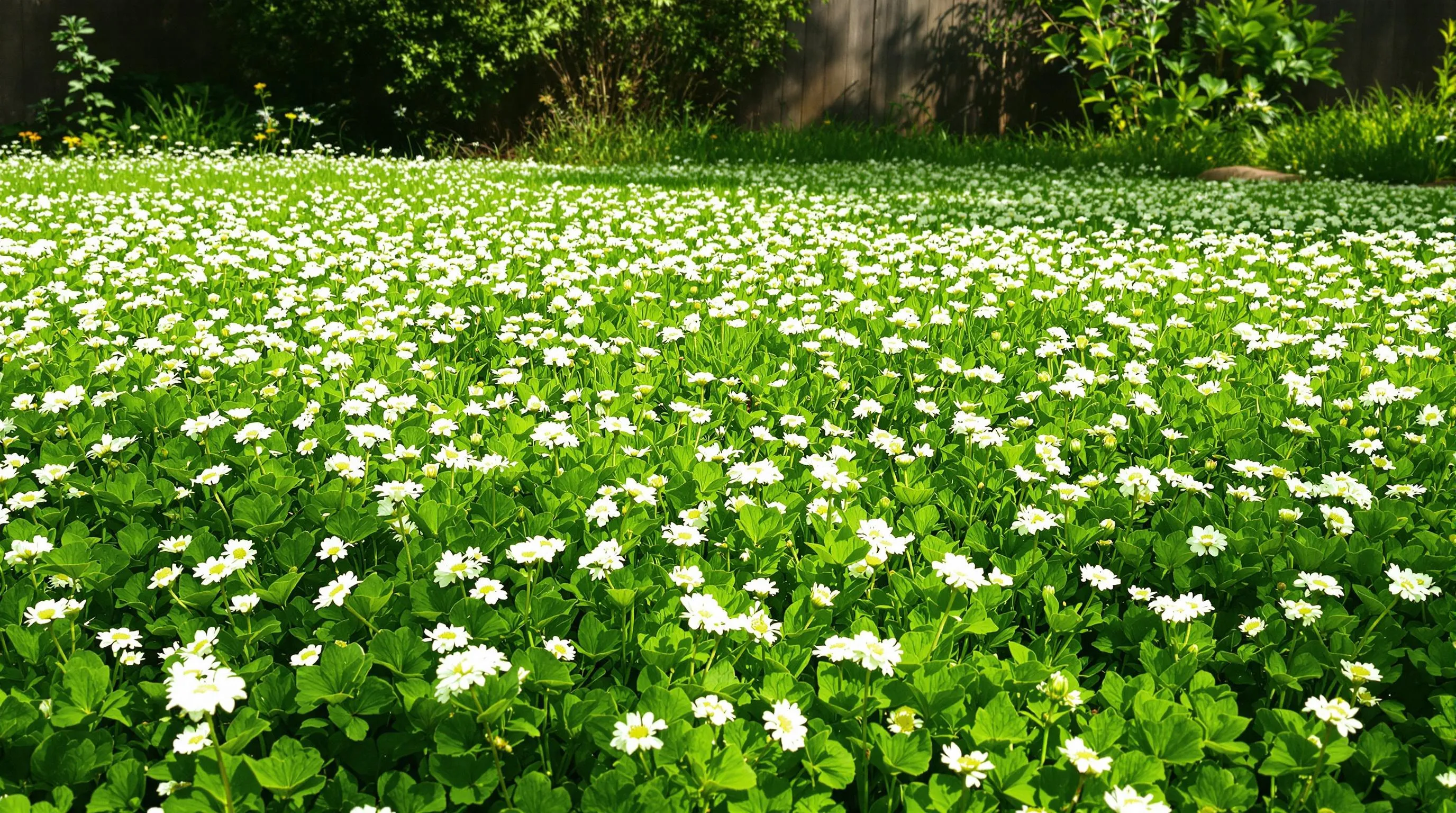
Clover lawns offer one of the most sustainable alternatives to traditional grass, with several varieties that provide year-round green coverage with minimal maintenance. White Dutch clover (Trifolium repens) remains the most popular choice, growing just 2-8 inches tall with iconic white flowers that support pollinators. For an even shorter option, microclover stands at only 4 inches when unmowed and produces fewer flowers, blending seamlessly with existing lawns. Red clover (Trifolium pratense) grows slightly taller (12-24 inches) and displays striking purplish-pink blooms, making it perfect for meadow-like areas. Strawberry clover (Trifolium fragiferum) thrives in challenging conditions, including clay soil and areas with higher salinity. All clover varieties fix nitrogen naturally, eliminating the need for fertilizers, require up to 80% less water than traditional lawns, and stay green even during drought periods. You’ll find these clovers establish quickly from seed, with most varieties costing significantly less than grass seed and offering exceptional durability against moderate foot traffic. For best results, plant clover in spring or early fall, and expect full coverage within 4-6 months, creating a sustainable lawn that benefits both your industry and the environment.
Moss Gardens: Perfect Solutions for Shady Areas
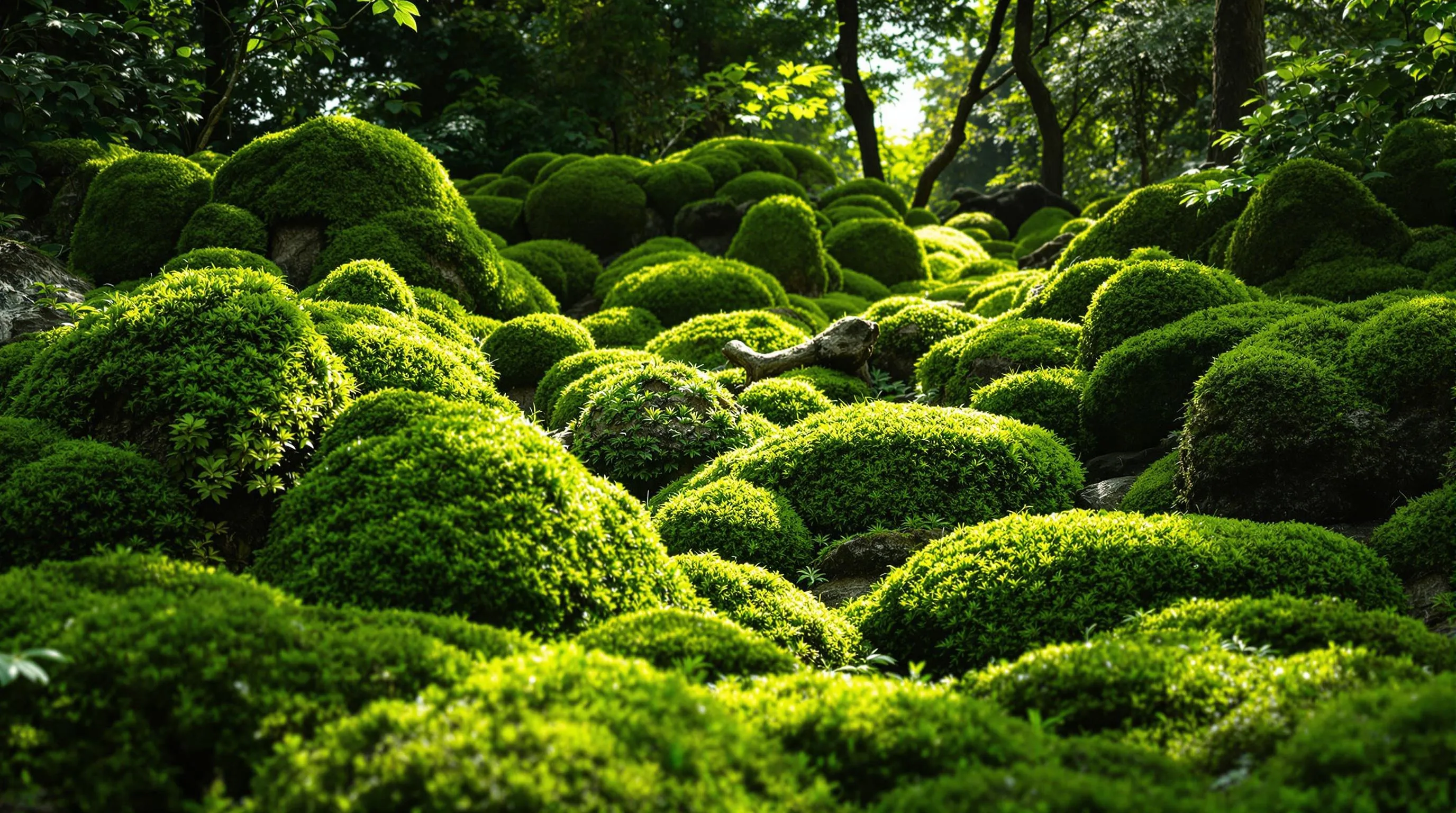
Moss creates an enchanting, emerald carpet that’s ideal for those problematic shady spots where grass refuses to grow. Unlike traditional turf, moss thrives in low-light conditions, acidic soil, and even compacted areas. You’ll find moss requires virtually no mowing, fertilizing, or watering once established, making it a truly maintenance-free ground cover option. Several varieties like sheet moss (Hypnum), cushion moss (Leucobryum), and fern moss (Thuidium) offer different textures and heights to create visual interest. For successful moss establishment, simply clear the area of debris, ensure consistent moisture during the first few weeks, and consider misting occasionally during dry periods. The velvet-like appearance of moss gardens brings a peaceful, woodland aesthetic to your industry while solving the challenge of growing plants in deeply shaded areas. For best results, choose areas with minimal foot traffic, as moss can withstand light walking but not regular pathways.
Sedges and Ornamental Grasses That Never Need Mowing
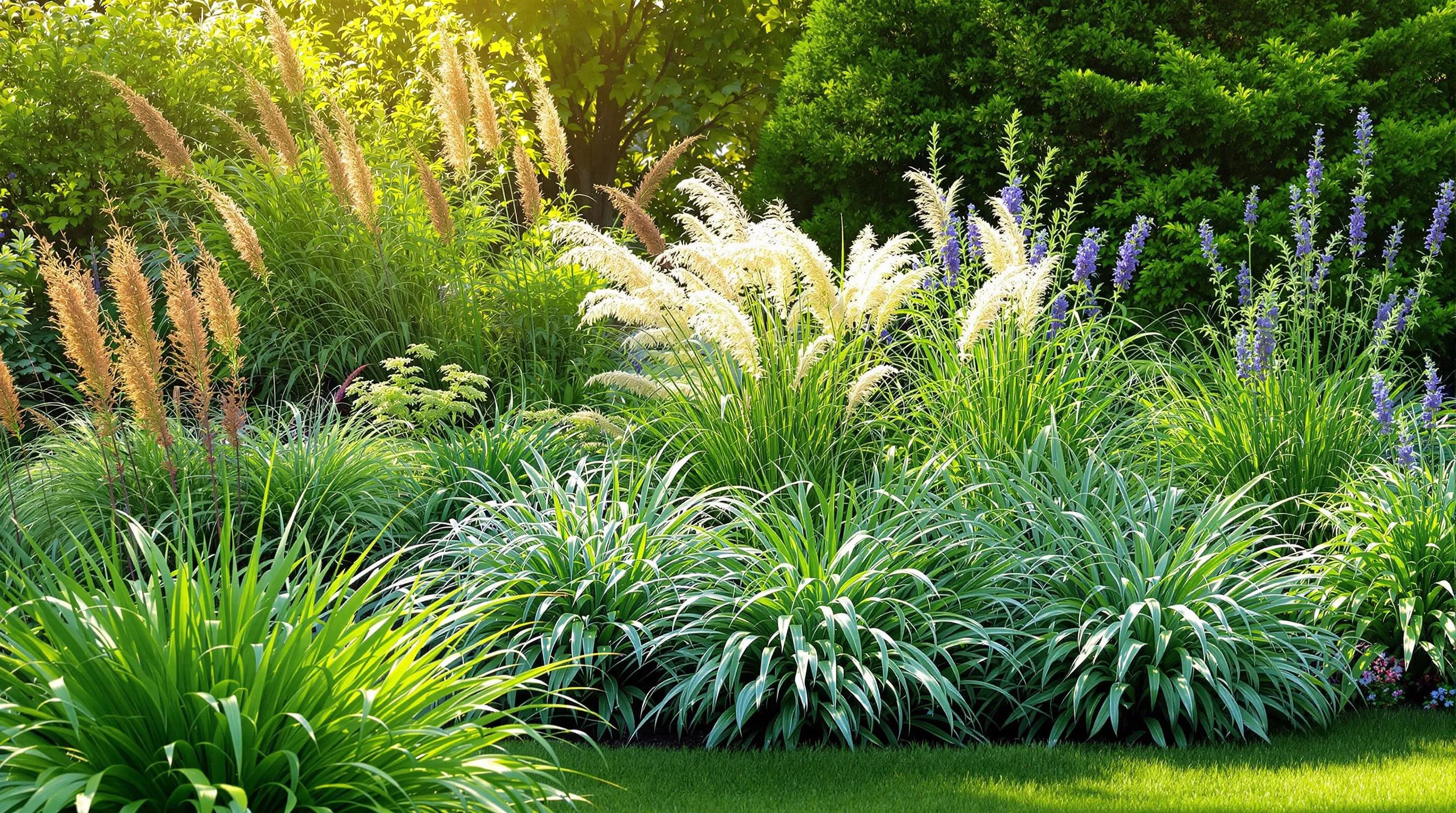
Sedges and ornamental grasses offer the perfect solution for homeowners seeking a no-mow alternative with more height and texture than ground covers. These versatile plants create movement and visual interest while requiring virtually no mowing maintenance. Pennsylvania sedge (Carex pensylvanica) thrives in partial shade and forms elegant clumps reaching 8-10 inches tall with fine, arching foliage. Blue fescue (Festuca glauca) delivers striking blue-gray color in compact 6-12 inch mounds that remain evergreen in many regions. For sunny spots, prairie dropseed (Sporobolus heterolepis) creates fountain-like 2-3 foot tall clumps with delicate seed heads that catch light beautifully. Japanese forest grass (Hakonechloa macra) brightens shady areas with its cascading chartreuse or variegated foliage. Little bluestem (Schizachyrium scoparium) offers remarkable four-season interest with blue-green summer color that transforms to vibrant copper-orange in fall. Plant these grasses in groups for maximum impact, spacing them according to their mature width, and enjoy their low-maintenance beauty year after year.
Drought-Resistant Ground Covers for Water Conservation
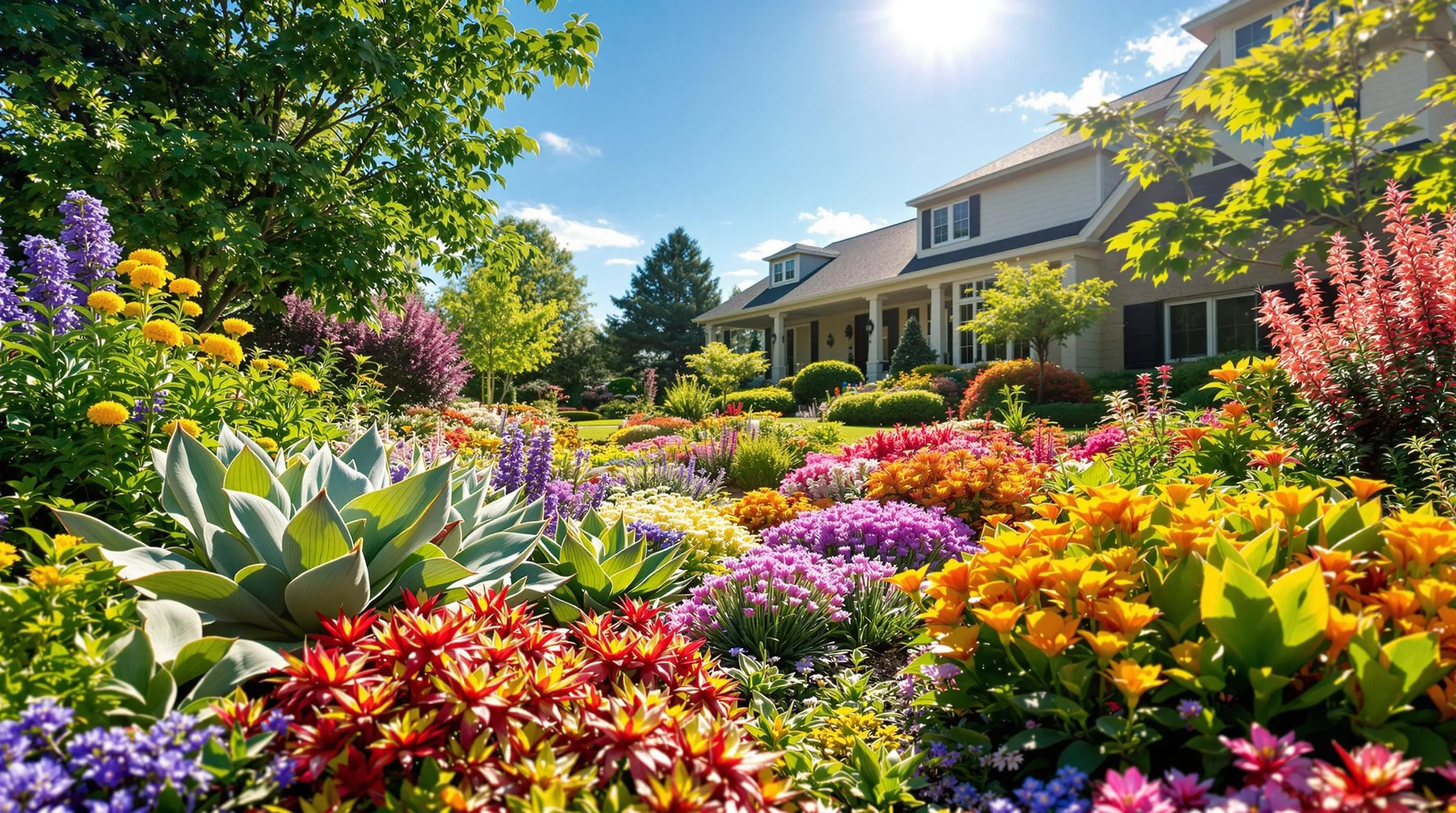
Drought-resistant ground covers offer an exceptional solution for homeowners looking to conserve water while maintaining an attractive industry. These hardy plants have evolved specialized adaptations like waxy leaves, deep root systems, and reduced leaf surface areas that minimize water loss. Options like sedum ‘Dragon’s Blood’ require as little as 1 inch of water per month once established, compared to traditional lawns that demand 1-2 inches weekly. Lamb’s ears (Stachys byzantina) feature silvery, fuzzy foliage that reflects sunlight and retains moisture, while ice plant (Delosperma) stores water in its succulent leaves. Creeping phlox creates a colorful spring display with minimal irrigation needs, and buffalo grass native to North American prairies can survive on rainfall alone in many regions. These water-wise alternatives not only reduce your water bills by up to 50% but also minimize runoff and erosion while providing texture and year-round interest to your industry.
Installing Your No-Mow Ground Cover: Step-by-Step Guide

Transforming your lawn into a no-mow paradise requires proper installation techniques. Follow these essential steps to ensure your ground covers thrive from day one.
Site Preparation Techniques
Start by completely removing existing grass and weeds from your installation area. Use a sod cutter for large areas or a garden spade for smaller spaces to strip away old turf. Test your soil pH and amend as needed—most ground covers prefer slightly acidic to neutral soil (pH 6.0-7.0). Break up compacted soil to a depth of 6-8 inches using a tiller or garden fork, then remove rocks, roots, and debris. Add 2-3 inches of compost to improve drainage and fertility, working it thoroughly into the top 4 inches of soil. Level the area with a rake, creating a smooth planting surface while ensuring proper drainage away from structures. For persistent weed problems, consider laying cardboard or newspaper as a biodegradable weed barrier before adding a thin layer of compost on top.
Planting Methods for Different Ground Covers
Choose the right planting method based on your selected ground cover type. For creeping varieties like thyme and sedum, space individual plants 6-12 inches apart, allowing room for spread. When using clover or microclover, broadcast seeds at 2-3 ounces per 1,000 square feet, then lightly rake to incorporate them into the soil surface. Ornamental grasses and sedges should be planted as individual specimens with proper spacing based on their mature width. Mosses work best when either transplanted as patches or applied as a slurry mixture to damp soil in shaded areas. Water newly installed ground covers thoroughly, providing consistent moisture during the first 3-4 weeks. Apply a thin layer of fine mulch between plants to suppress weeds until your ground cover establishes. For faster coverage, plant more densely in a grid pattern rather than rows. Most ground covers require 1-2 growing seasons to fully establish, so be patient and perform regular maintenance during this critical period.
Maintaining Your No-Mow Lawn: Minimal Care Requirements
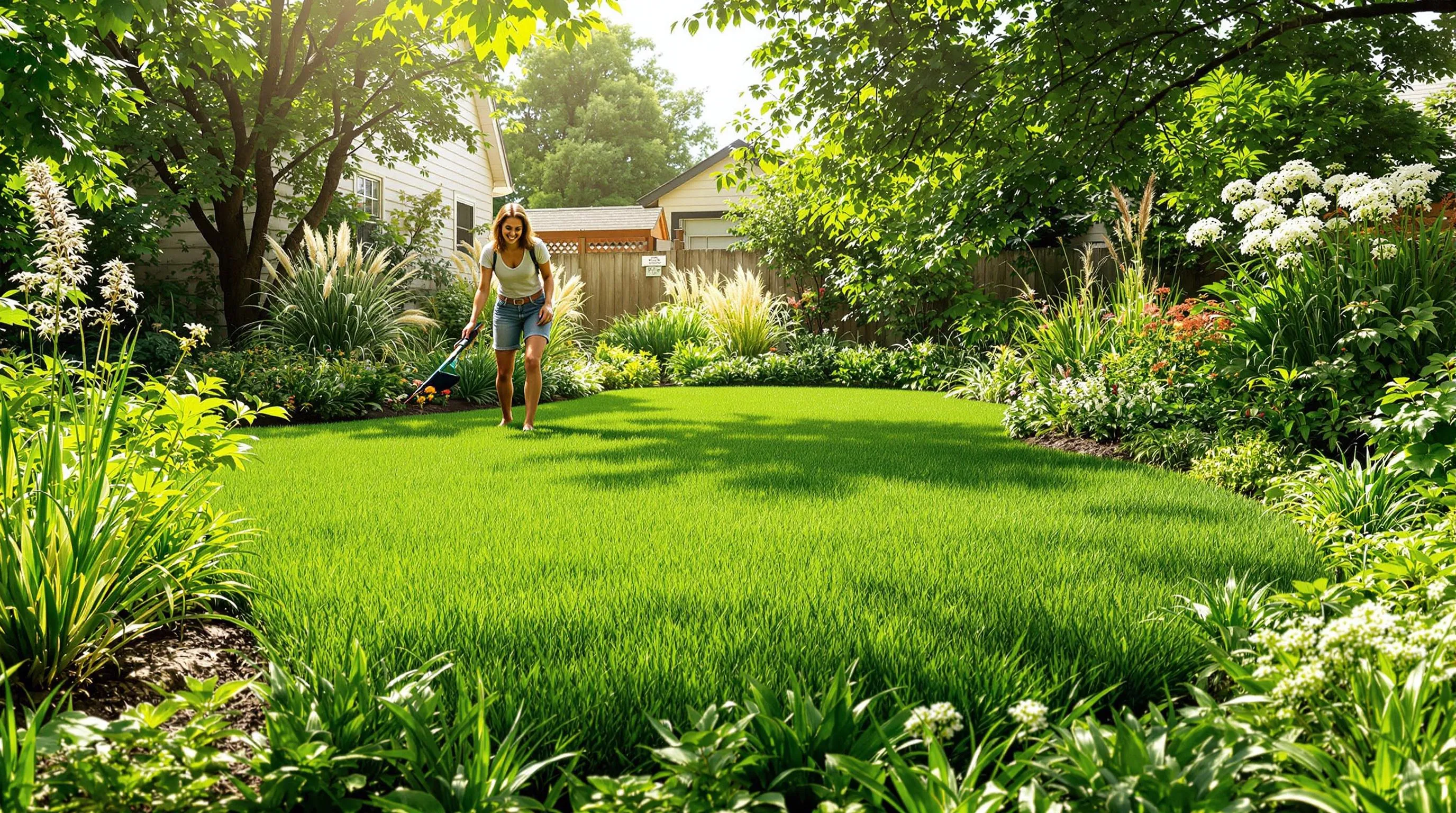
One of the biggest advantages of a no-mow lawn with ground covers is the important reduction in maintenance compared to traditional grass. While your ground cover lawn isn’t completely maintenance-free, the care requirements are substantially lower. Most ground covers need only occasional weeding during their establishment phase, typically the first 1-2 years. Once established, many varieties require just seasonal trimming to maintain their shape and prevent spreading into unwanted areas. Water requirements are minimal, with most established ground covers needing supplemental irrigation only during extended drought periods. Unlike traditional lawns, fertilization is rarely necessary, as many ground covers like clover naturally enrich the soil. Pest issues are also less common since diverse plantings create natural resistance to widespread infestations. For ornamental grasses, simply cut back dead foliage once annually in late winter. With sedums and other flowering ground covers, deadheading spent blooms can encourage continued flowering, though it’s not essential for plant health. This minimal care regimen translates to important time savings – most homeowners report spending less than 10 hours per year maintaining their no-mow lawns compared to the 70+ hours typically invested in traditional lawn care.
Conclusion: Embracing a Sustainable, Beautiful Landscape
Ground covers transform your outdoor space into a vibrant low-maintenance industry that works with nature rather than against it. By switching to these eco-friendly alternatives you’ll save countless hours on mowing while creating a more resilient yard that requires less water fertilizer and care.
Whether you choose aromatic creeping thyme colorful sedums or elegant ornamental grasses your no-mow lawn will provide year-round interest while supporting local pollinators and biodiversity. The initial effort of installation pays dividends for years to come.
Ready to break free from the traditional lawn treadmill? Start small with a test area and watch as your sustainable industry evolves into a beautiful outdoor sanctuary that you’ll actually have time to enjoy.

